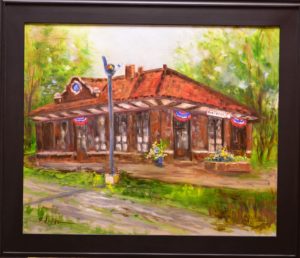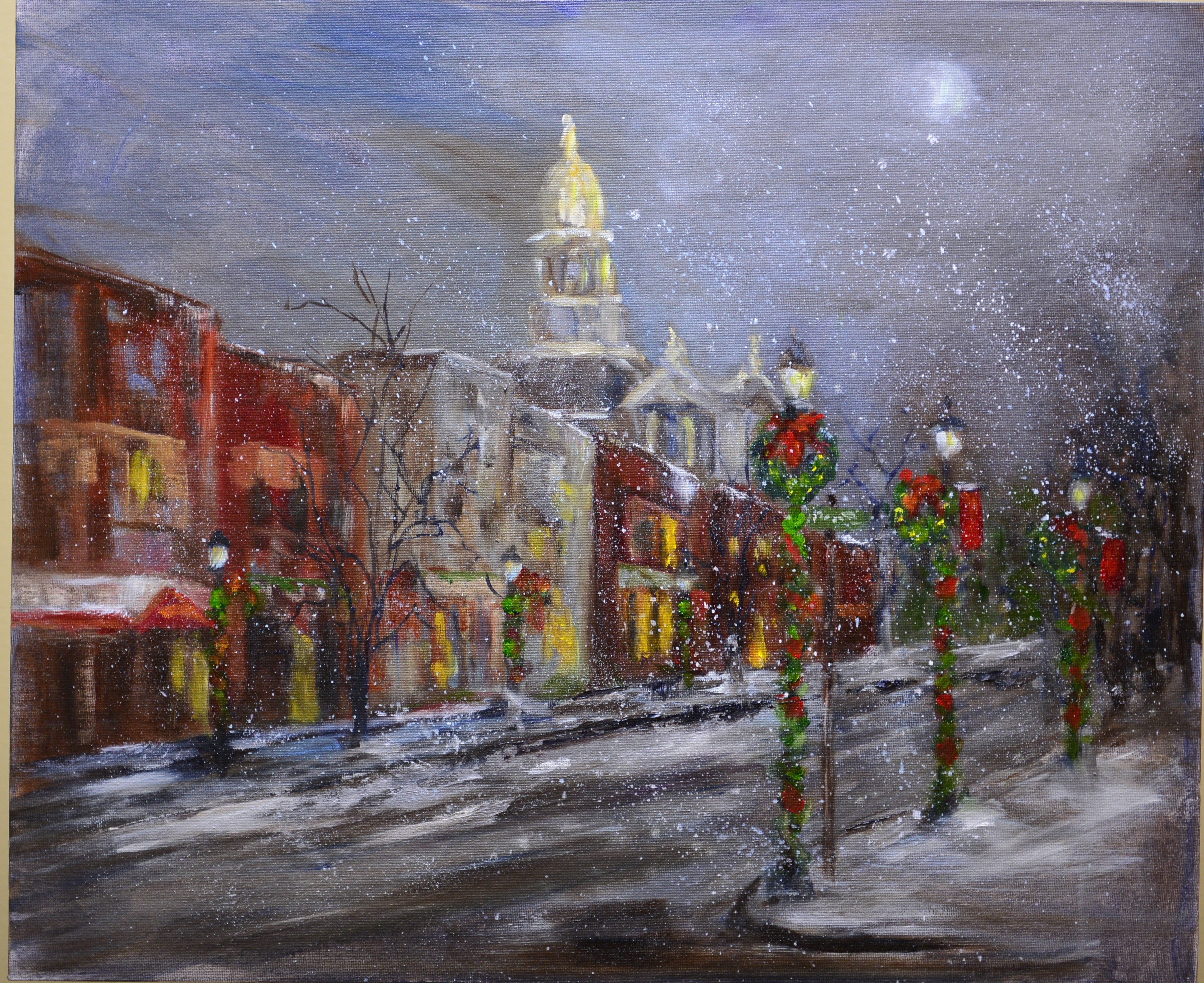Railroads and bridges now line the walls of Belmont County Juvenile Court thanks to the work of regional artist Barbara Eiben.
Eiben, known to Belmont residents as an impressionist painter of the county’s landmarks, was commissioned by a judge who wanted to showcase the scenery that makes the county feel like home.
“We had this feeling that the courtroom was very sterile,” Eiben says. “We wanted to make it into something more personable while keeping with what makes this area important to the people who live here.”
As a young adult, Eiben wanted to go to art school at a time when it wasn’t common to pursue less traditional careers. She went to business school instead and has attended workshops and seminars in the years since to build her skills. Eiben has been painting murals, still lifes, and more for over 50 years now.
“You’re never done learning when you paint,” Eiben says, and centers her work on watercolors, acrylics and impressionistic styles. “I do it for myself – it’s an enjoyable release for me.”
Regional work is not new to Eiben, who has found that local buyers love to purchase paintings in the area where they’re from. Her past commission work includes the hallways of an office building in Pennsylvania and various city murals.
She also feels connected to a broader network of female artists in Appalachia. “We don’t have an art guild in St. Clairsville, so it can get pretty lonely,” she says. “But that’s why I go around to seminars in the area – the artist community is very relatable and supportive, and you can kick around different ideas with each other.”

Connectivity is an important facet of regional artistry. Kari Gunter-Seymour, who founded and curates the Women of Appalachia Project to gather local female artists together, finds great value
in the work of artists like Eiben. “Providing opportunities for females from the Appalachian region to exhibit their art, raw and unfiltered, allows us to openly celebrate our heritage and culture, throw open the doors, share our experiences and ideals, and challenge the stereotype,” Gunter-Seymour says.
Among regional female artists, Eiben distinguishes her work with thin yet visible brush strokes, carefully separated colors, and the impression of shifting light. But her long-standing appreciation of all art allows her to define it much more broadly: “Art is art whether you’re going to paint it on a piece of wood or canvas.”
SEO
Related posts
What’s Inside
- Behind the Bite (65)
- Features (120)
- In Your Neighborhood (99)
- Photo Essay (4)
- Read the Full Issue (8)
- Talking Points (45)
- The Scene (14)
- Uncategorized (3)
- Web Exclusive (5)
- What's Your Story? (20)


Find us on Social Media